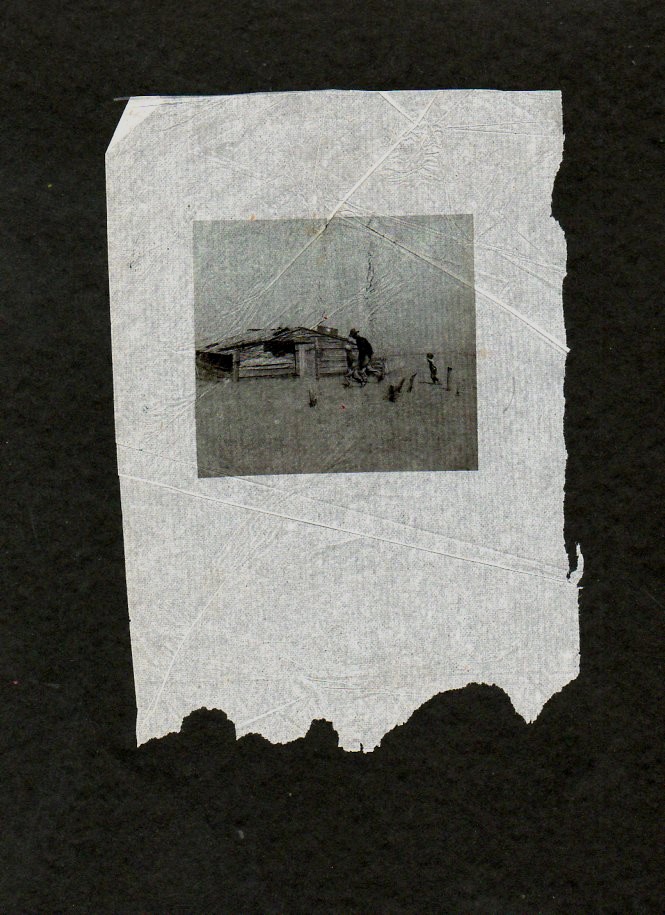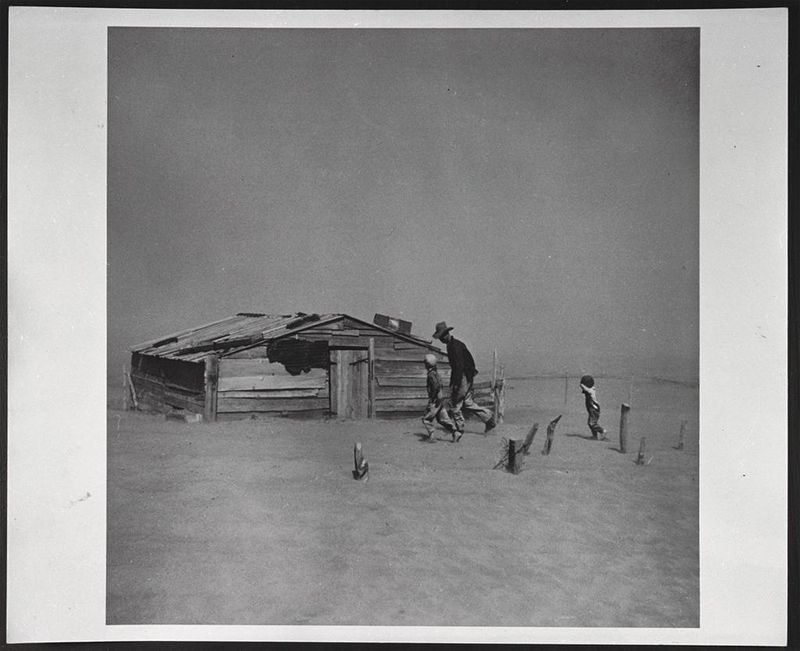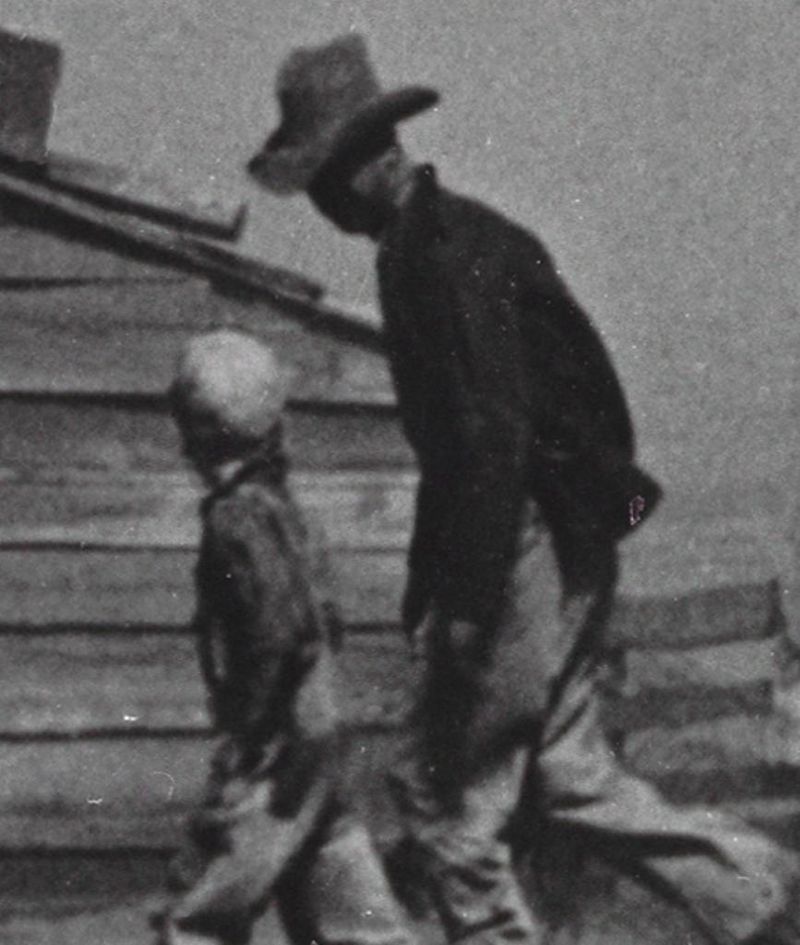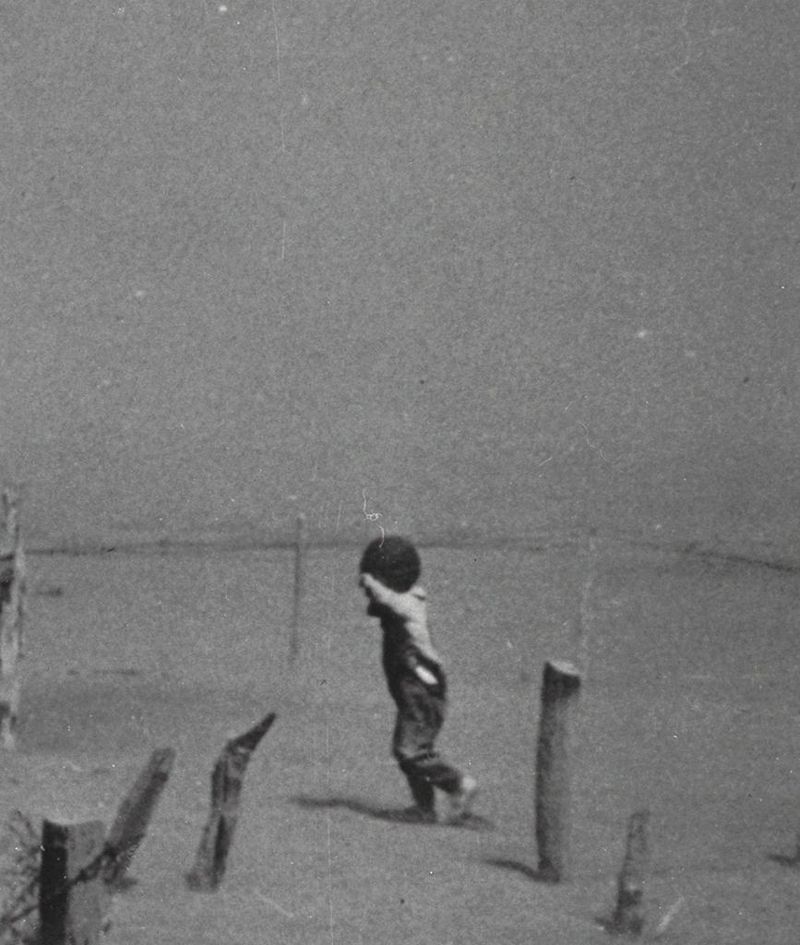JF Ptak Science Books
I've experimented a little in presenting photographic images on a slightly different medium, and the results are interesting, Take for example Arthur Rothstein's classic 1936 "Father and Son" (actually, the "son" should be a plural, as there are two little kids rushing in the photo): I've used a 25 meg file and printed (lasered) rather small on a piece of antique tissue-guard paper--the paper, from 1830, is fantastically light, yet very strong for its remarkable thinness. The result of the modern, small Rothstein printed on the 170-year-old paper looks "believable" in its own odd way.
My manipulated-printed effort:

[This image is available on my blog bookstore.]
And the original:
And details in the original, small canvases in their own right:






You know, you stumbled onto something there. You might be sitting on a gold mine. I read about an art forger who would buy antique encyclopedias, he'd cut out all the blank endpapers, and sell them back to a used book dealer. That way he'd get more than a dozen pieces of blank paper that were absolutely authentic to the year of the encyclopedia, with natural yellowing and everything. The usual problem with art forgers is that it is hard to come by mass quantities of antique, blank papers. If you want to forge some 1930 Matisse lithographs, go buy an 1930 Encyclopedia Britannica and cut out the endpapers, then print a series of lithos on them. Voila, a whole set of lithos that all look authentic because they're all on matching, period paper.
Posted by: Charles | 29 November 2010 at 07:27 PM
Well, yes and no.There's quite a telltale heart to paper, and all manner of ways to determine whether it makes sense for ink to be on them, or not. This is true particularly of older paper, say before 1800, when you can find a translucent signature of the paper's origins, faint footprints of the metal used in the frame to make the paper and so on. It would make much more sense to forge letters and autograph more so than prints. // There are ways to determine how long ink has been in/on paper, but it is an expensive and slightly destructive test. /// Overall its a complicated issue. But the point is well taken that it is *very* difficult to find old unused paper. In my own case I wasn't trying to match up paper to the age of the art; I just liked the look of it with the subject, particularly the tissue with the FSA photos.
Posted by: Ptak | 29 November 2010 at 08:23 PM